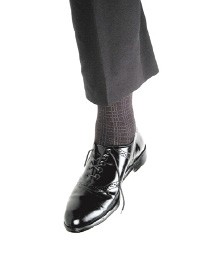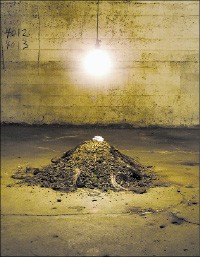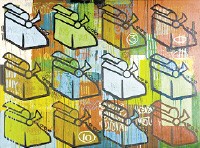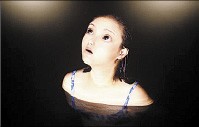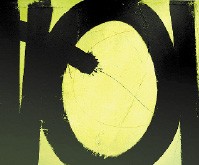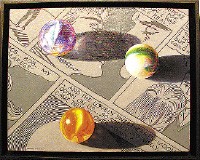For his exhibition of recent work at Perry Nicole Fine Art, John McIntire transforms smooth, cool stone into sexual icons, fertility fetishes, and sacrificial gods. Many of McIntire’s marble sculptures are complex syntheses of primal power and grace.
Voodoo Something to Me turns Belgian black marble into a two-foot-tall Venus of Willendorf with fertile bellies carved on her truncated body. Aztec Dreamer is a haunting composite of desert mystic, abstract masterwork, and sacrificial god. This large, supine figure with curved spine could be a yoga devotee practicing an advanced pose, a Buddha kicking back for a good belly laugh, or one of Henry Moore’s reclining figures. The title and posture of the piece also evoke Chac Mull, the Toltec god on whose belly humans were sacrificed.
In one of the most poignant and powerful works of his career, McIntire embodies Marilyn Monroe in white Georgia marble. Beneath a luminous floor-length sheath, we can just make out the sleek contrapposto figure with arched right foot on the verge of spinning across the gallery floor. Marilyn wraps her arms around her upper torso and forehead — an attempt, perhaps, to comfort herself or to better integrate mind/body/heart. With five feet of curvaceous white marble, McIntire brings to life the complex blond bombshell who counted playwrights and presidents as confidants, the comedienne who starred in some of the classics of American cinema, the aging ingénue who overdosed on drugs, and the Hollywood sex symbol who needed more.
At Perry Nicole Fine Art through August 15th

Anthony Lee’s American Out-Caste
Another visionary artist, Kurt Meer, immerses himself in alchemical and esoteric texts. Instead of turning dross into gold, in the exhibition “Voyage” at L Ross Gallery, Meer accomplishes something more personal and profound. He takes us downriver toward sunset in a body of work that attunes us to the subtlest of stimuli, baptizes us with light, and at the end the journey, eases us into night.
In Voyage I, river mist acts as a prism turning sunset into rainbow. Melon bleeds into teal into indigo into violet. White-hot yellow radiates from the center of the painting, creating a bowl of light that washes over and through the viewer.
In Voyage II, we move closer to the winding river, whose surface mirrors the sunset. No neons, no street lights, no strobes — above and below we are immersed in soft halos of light. The painting Solace brings us to the final bend in the river where Meer’s shadows are as nuanced as his colors. Earth’s edges dissolve into mist and darkening sky, palest peach streaks across the middle of the painting, and our own edges begin to blur. Still moving downriver, the last trace of color fades, as Meer enfolds us into the soft blanket of night.
At L Ross Gallery through August 31st
Anthony Lee’s vibrant colors, splashes of paint, and glossy surfaces bring to mind carnivals and the sunny beaches of Hawaii and St. Croix, islands where the artist has lived. In his exhibition “Under the Sun” at the Memphis Brooks Museum, Lee’s strongest paintings don’t depict tropical playgrounds but are, instead, scenes of hard labor, broiling suns, and the endless cycles of poverty.
In American Out-Caste, three large men lumber toward a livery stable that stood on Main Street in Memphis in the early 1900s. A fiery glow illuminates horses, wagons, and the stable, which are back-dropped by splatters of red paint and a silhouette of Memphis’ current skyline. A white-hot sun shines above the stooped right shoulder of one of the men. We can’t see his face. He could be looking for work, any kind of work, or this could be a showdown at high noon by men armed only with rakes and hoes.
Another punishing sun hovers above the heads of sharecroppers, circa 1930s, toiling with crude tools beneath skyscrapers in Work Ethic. The only thing unrestricted in Unrestricted are broiling temperatures. In this Dante-esque painting, faces floating in saturate red look stupefied by the heat.
In Mary and Son, 19th-century cotton pickers are also backdropped by heat and 21st-century architecture. Acrid greens glow around the heads of a mother and her son, who is strapped down with a large sack of cotton. The fetid halos suggest both polluted environment and tainted sacrifice. As more Americans fall below the poverty line, as generation after generation of the urban poor, undocumented migrant workers, and subsistence farmers are consigned to lives of quiet desperation, Lee’s 19th-, 20th-, and 21st-century field hands become powerful portraits of poverty repeating itself.
At Memphis Brooks Museum of Art through August 12th
